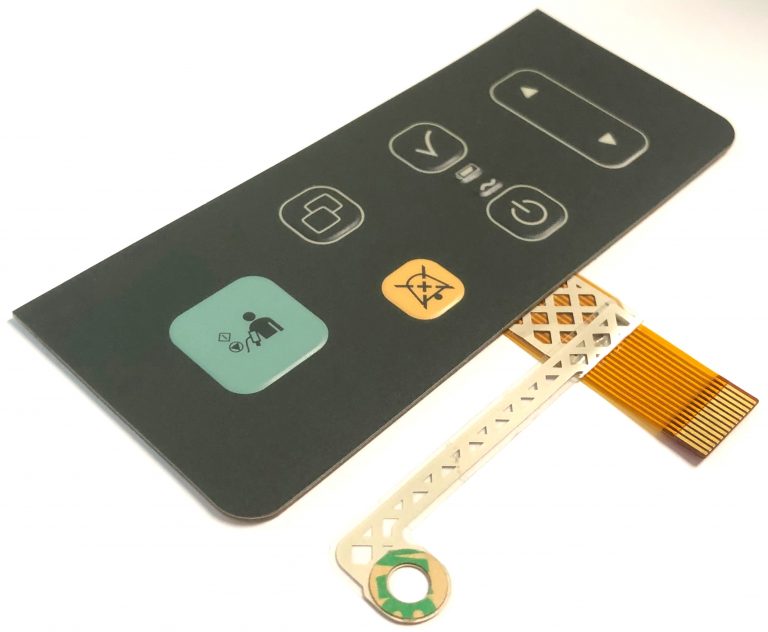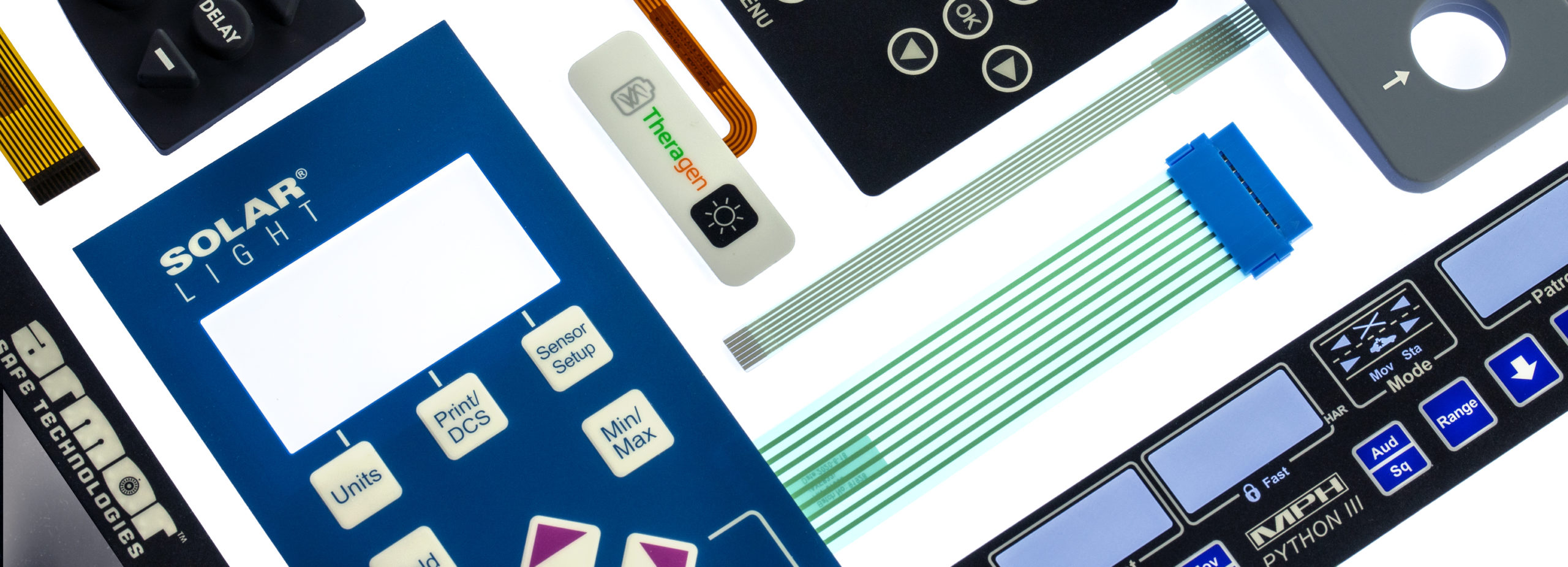Projects requiring accuracy should always involve a qualified membrane switch manufacturer from the start.
Projects requiring accuracy should always involve a qualified membrane switch manufacturer from the start.
Blog Article
Everything About Membrane Layer Switch Over: Comprehending Its Layout and Capability
When you assume about the control user interfaces in contemporary gadgets, membrane layer switches usually come to mind. Let's discover what sets membrane switches over apart from other control systems.
What Are Membrane Layer Buttons?

Membrane layer switches can also be personalized concerning form, dimension, and graphics, enabling manufacturers to develop special interfaces tailored to details products. On the whole, membrane buttons play a significant role in boosting customer experience across a vast range of applications.
Just How Membrane Layer Changes Work
When you push a trick on a membrane button, it activates a simple yet reliable device. membrane switch manufacturer. The leading layer, usually made of adaptable product, presses down onto a conductive layer under it.
You'll notice that the tactile comments varies based upon the button style, providing either a soft click or an extra obvious action. Once you launch the trick, the membrane go back to its initial placement, resuming the circuit and stopping the signal. This procedure happens practically immediately, ensuring a receptive individual experience.
Membrane switches are preferred because of their longevity and resistance to dust and dampness, making them suitable for different applications, from family appliances to clinical devices. Recognizing this procedure aids you appreciate their prevalent use.
Key Parts of Membrane Layer Buttons
Comprehending the key components of membrane switches is essential for grasping their functionality and design. The protective layer shields versus environmental elements and put on, prolonging the button's life-span. By understanding these elements, you'll obtain understanding into just how membrane layer switches run and their significance in various applications.
Materials Used in Membrane Layer Change Style
The performance and toughness of membrane changes greatly rely on the products utilized in their style. You typically run into polyester and polycarbonate as main substrates as a result of their exceptional strength and flexibility. These products withstand scrapes and chemicals, making them excellent for demanding settings.
The conductive layers commonly utilize silver or carbon, selected for their dependability and conductivity. membrane switch manufacturer. Silver offers premium performance, while carbon is a cost-effective alternative. For the overlay, you may take into consideration a matte or shiny surface, relying on your visual needs and user experience
Adhesives play an important duty too; they bond layers firmly and assure durability. Make specific to pick adhesives that endure ecological elements like temperature and humidity. Finally, do not overlook the value of a great printing strategy for graphics, as it enhances both functionality and visual charm. Selecting the best products will certainly guarantee your membrane button stands the examination of time.
Layout Factors To Consider for Membrane Layer Buttons
While developing membrane layer switches, it's important to take into account different factors that influence their functionality and customer experience. Begin by concentrating on the layout and switch dimension; make particular they're intuitive and easy to navigate.
Don't neglect the visuals layout; clear labeling and shade comparison are considerable for exposure. Validate your style suits ecological variables, like dampness or temperature variants, which might impact efficiency. Bear in mind the relevance of testing models with actual individuals to gather responses and make essential adjustments. This repetitive procedure helps you improve the layout, confirming it meets both functional and aesthetic needs efficiently. By meticulously taking into consideration these aspects, you'll create a membrane layer switch that boosts usability and complete satisfaction.
Applications of Membrane Layer Switches
Membrane buttons are flexible parts located in different applications, from industrial devices to customer electronics. You'll see their influence in machines that require resilient interfaces and in devices that gain from streamlined layouts. Recognizing these applications helps you appreciate the performance and functionality of membrane layer buttons in day-to-day modern technology.
Industrial Equipment Usage
When you're looking to improve page the performance of industrial equipment, membrane buttons provide a trusted solution that combines sturdiness with user-friendly layout. These buttons are perfect for harsh atmospheres, offering resistance to dust, wetness, and chemicals. You'll discover them in control panels for producing devices, a/c systems, and clinical gadgets, where accuracy and responsiveness are essential. Their reduced profile means they fit seamlessly into different devices, saving useful area while maintaining ease of use. With personalized graphics and backlighting alternatives, you can develop an user-friendly interface for operators, enhancing effectiveness and safety. And also, their long lifespan lowers upkeep costs, making them a wise financial investment for your commercial applications. Welcome membrane layer switches to simplify your procedures and boost total efficiency.
Consumer Electronic Devices Integration
In the domain name of consumer electronic devices, membrane switches play a necessary role in improving customer interaction and device functionality. You'll locate them in tools like microwaves, push-button controls, and gaming consoles, supplying a seamless way to communicate with technology. Their smooth layout enables simple combination into numerous products, making controls user-friendly and easy to use. With their capability to integrate graphics and backlighting, you can take pleasure in a modern-day aesthetic that complements the device's total look. Membrane layer buttons likewise ensure durability and resistance to dust and dampness, prolonging the life-span of your electronics. By choosing membrane switches, you boost not simply the functionality however additionally the design of your gadgets, making everyday interactions smooth and delightful.
Benefits and Drawbacks of Membrane Switches
While membrane buttons provide a series of advantages, they also come with some drawbacks that you should take into consideration. One considerable benefit is their portable design, making them ideal for space-constrained applications. They're additionally economical, providing a long lasting option with a reduced production price. Furthermore, their smooth surface is very easy to tidy, improving hygiene in environments like healthcare facilities.

Membrane buttons can have a shorter life-span compared to mechanical switches, especially under heavy usage. They can also be much less tactile, which could influence user responses throughout operation. Stabilizing these pros and cons will certainly assist you determine if membrane layer buttons are the ideal fit for your project.
Often Asked Questions
How Much Time Do Membrane Layer Switches Commonly Last?
Membrane switches over commonly last in between 5 to ten years, depending on use and environmental problems. You'll want to review elements like wear, exposure to moisture, and temperature variations to determine their Recommended Reading longevity effectively.
Can Membrane Layer Switches Over Be Customized for Specific Designs?
Yes, you can personalize membrane layer buttons to fit particular styles (membrane switch manufacturer). You'll have the liberty to select colors, forms, and designs that match your project's demands, ensuring they mix perfectly with your overall visual
What Is the Price Variety for Membrane Layer Switch Over Production?
The cost range for membrane button production commonly falls between $1 and $10 per system, relying on elements like design intricacy, amount, and products. You can obtain quotes from suppliers to discover the most effective choice.

Are Membrane Changes Water-proof or Resistant?
Membrane layer switches can be designed to be water-proof or resistant, depending upon materials made use of and building and construction methods. If you need them for damp environments, ensure you define those demands during the design process.
How Do Membrane Switches Compare to Conventional Buttons?
Membrane switches are usually thinner and more flexible than standard buttons, providing a smooth layout. They're typically easier to clean up and integrate, yet could not offer the tactile responses you're utilized to with mechanical alternatives.
Final thought

Report this page